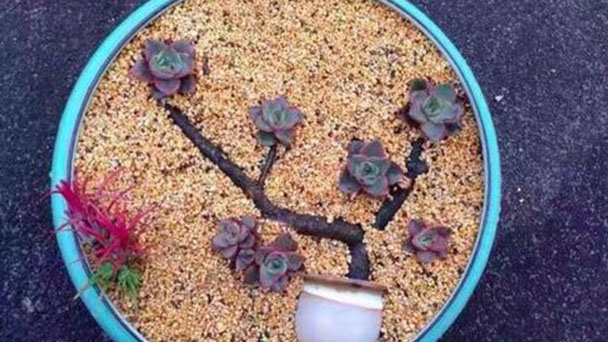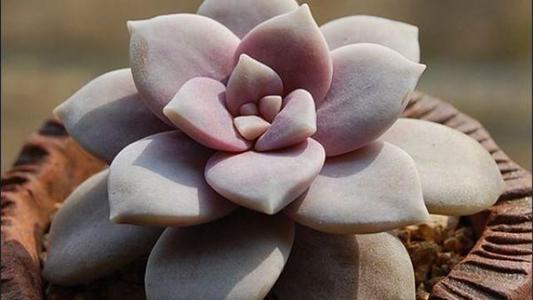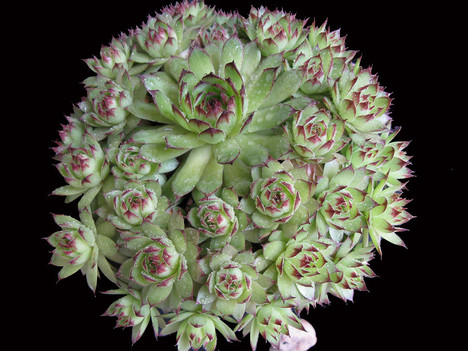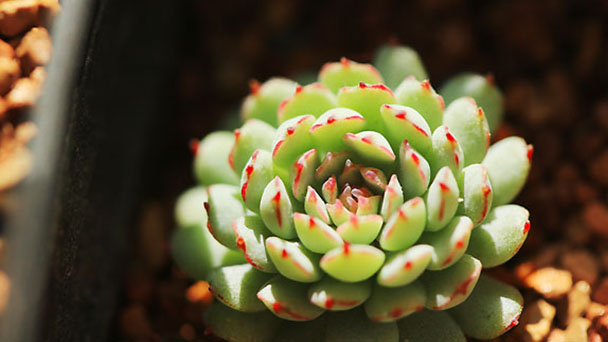Succulent plant-How to care for succulents
Written by Maggie
Dec 21 2020

Succulents are plants with fleshy, thickened leaves and/or swollen stems that store water. The word “succulent” comes from the Latin word sucus, meaning juice or sap. Succulents are able to survive on limited water resources, such as dew and mist, making them tolerant of drought. There are many different species and cultivars of succulents spanning several plant families, and most people associate succulents with Cactaceae, the cactus family. (Keep in mind, however, that while all cacti are succulents, not all succulents are cacti.) Here are some caring tips for growing succulents.

How to care for succulents fall healthy leaves
Sudden loss of healthy leaves from Succulents may be caused by overwatering, stop watering immediately and leave Succulents in a ventilated curing; Get at least 6 hours of light from Succulents each day and plenty of light in the winter. Or if it's fertilized too much, dig up succulents and rinse the roots before planting.
1. Water for succulents
If you find that Succulents suddenly lose healthy leaves, it may be caused by overwatering. Overwatering Succulents will flood their roots and cause them to lose leaves. Stop watering and leave Succulents ventilated until the soil becomes dry and they can resume their original farming methods.
2. Light for succulents
Succulents are light-emitting plants. Lack of light will prevent photosynthesis of Succulents and affect their normal growth. Move Succulents to astigmatic locations for maintenance, ensuring no less than 6 hours of light per day and sufficient light for Succulents in winter.
3. Fertilizer for succulents
Succulents don't need much fertilizer, usually during their growing period. Using raw or thick fertilizer will cause fertilizer damage and cause succulents' leaves to fall off. Dig succulents out immediately, rinse with water, and plant in a new pot.
4. Succulents germs
If succulents leaves fall easily, they are most likely to be infected with black rot. If it is not serious, cut off the rotting area and let it soak in a solution of carbendym for half an hour. Let it dry before planting it in a new basin and then place it in a semi-ventilated area for growing.
Succulents infection powder can be rust ning or its powdery mildew fungus ester solution spray diluted in succulents infection. If often watering succulents in the summer, and spilled the water on the blade, it's easy to make its powdery mildew infection. Water pots along the edges, to ensure that the environmental ventilation, probability of occurrence can be reduced.

How to care for succulents infected powdery mildew
Many people raise succulents and find their own succulents are covered with white powder. This may be caused by infection of Succulents with powdery mildew. What about succulents' powdery mildew?
In fact, powdery mildew infection of Succulents mostly occurs in summer, which is caused by inappropriate growth environment and maintenance methods. In summer, the night temperature is around 25℃. Watering at night will make the soil warm and moist, which is very suitable for the breeding of bacteria.
Watering succulents should follow the "water when soil is dry and stop when its wet" principle and mainly water the roots, along the edge of the pot to ensure that succulents are well hydrated and that succulents are well ventilated when watering succulents.
Succulents are light-loving plants. Make sure they get at least 8 hours of sunlight a day. Plenty of sunlight makes them resistant to disease and helps them grow, but shade them properly during the summer to avoid sunburn on their surfaces.Fertilization should not be excessive.

Latest Updated
- Benefits of Bugleweed - 7 Science-backed Health Benefits
- Bugleweed Dangers & Side Effects - Is It Poisonous?
- How to Plant Evergreen Trees - What You Should Know
- When to Plant Evergreens - Grow Guide for Evergreen Trees
- 12 Wonderful Evergreen Shrubs for Your Garden
- 12 Popular Evergreen Plants with Pictures for Beginners
- When And How To Prune A Lilac Bush Like a Pro
- How to Grow & Care for Lilac Vine (Hardenbergia Violacea)
- Japanese Lilac Tree (Syringa Reticulata) Care & Propagation Guide
- Shumard Oak Pros and Cons - What to Know
Popular Articles
- Winter maintenance of Antirrhinum Majus
- How to Grow Terminalia Mantaly Tree
- How to Grow and Care for Crossostephium Chinense
- How to grow Antirrhinum Majus in spring
- Peristeria Elata (Dove Orchid) Profile: Info & Care Guide
- Underwatered Snake Plant (Sansevieria Trifasciata) - Signs And How To Fix
- How to Care for Brazilian Jasmine Plant (Mandevilla Sanderi)
- How to Grow & Care for Graptopetalum Purple Delight in Summer
- Rosa Chinensis (China Rose): Plant Growing & Care Tips
- How to Care for Baby Sun Rose (Aptenia Cordifolia)